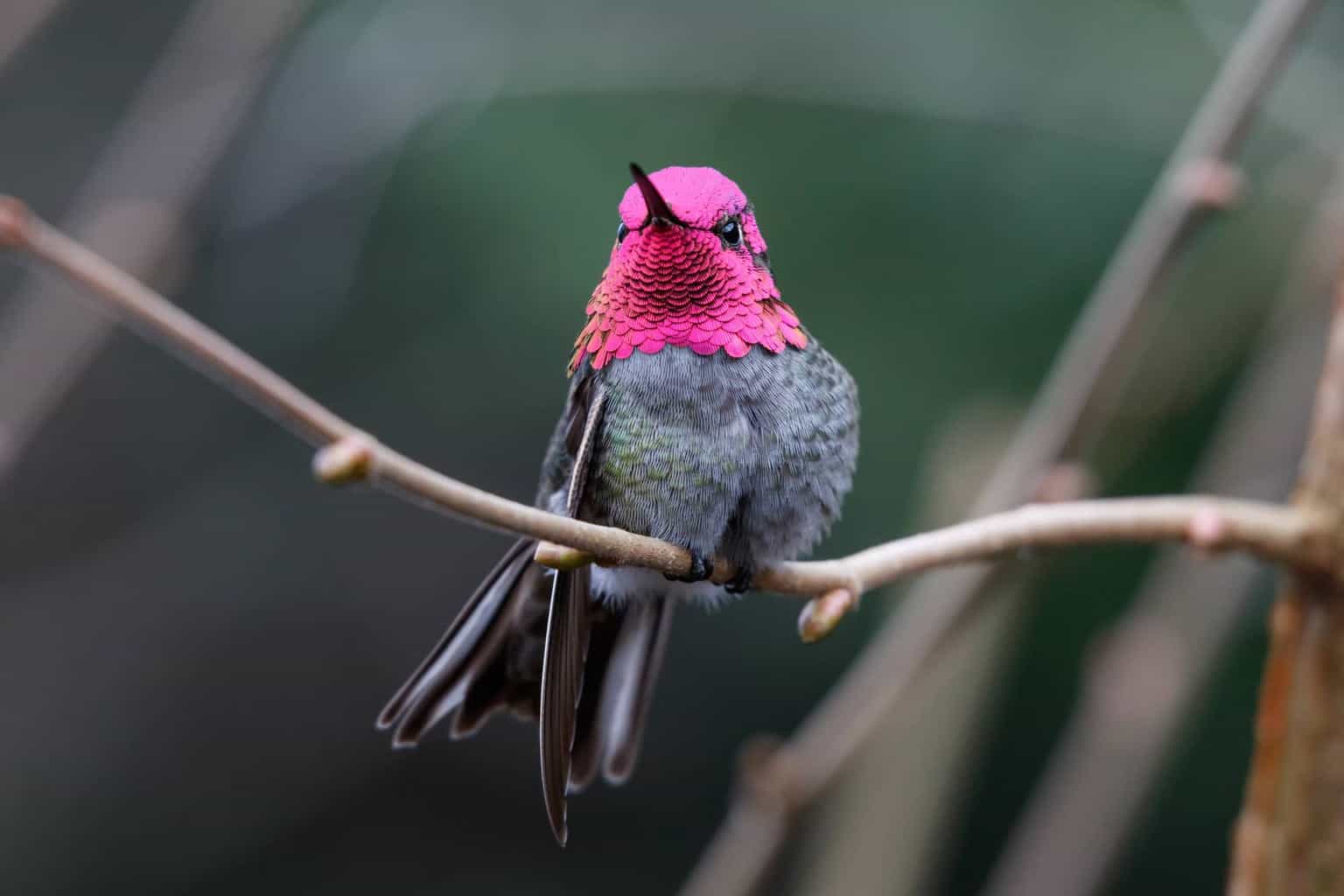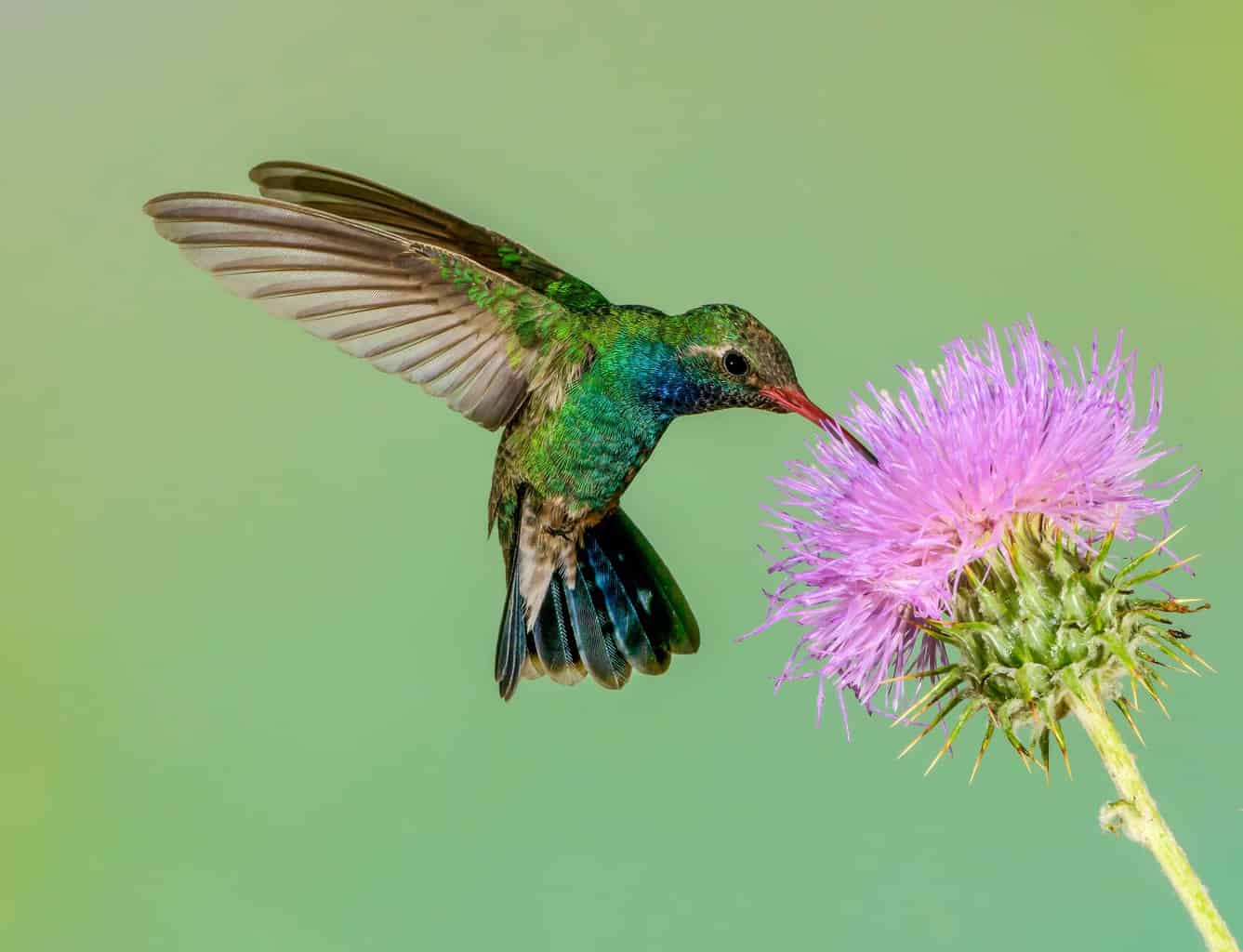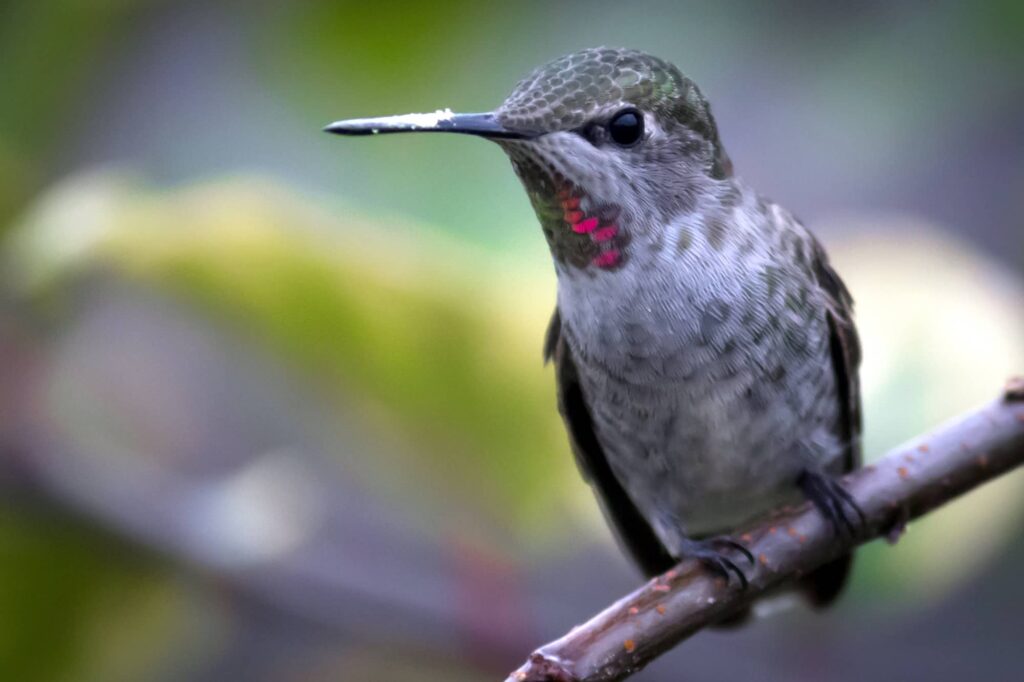Las Vegas is probably your first thought when you think of Nevada, but the state has a wide range more to offer than casinos, bachelor parties, or spontaneous eloping.
Lake Tahoe is a must-visit destination when you’re in the Silver State. Also, don’t forget to stop by Little A’Le’Inn near Area 51. And while we can’t guarantee you’ll spot any UFOs in the sky, you might find yourself enjoying hummingbirds as they zip around the air above you.
The three most common hummingbird residents in Nevada are Anna’s, the Black-chinned, and Calliope hummingbirds. However, there are six other hummingbird species you might spot in Nevada: Costa’s, Broad-tailed, Rufous, Ruby-throated, Broad-billed, and Rivoli’s hummingbirds.
Overall, Nevada is home to around four hundred and eighty bird species, of which nine belong to the Trochilidae (hummingbird) family. The American Bird Conservancy states that about 8% of the Trochilidae family is endangered. Luckily, only one of the hummers found in Nevada is on the conservation watchlist.
List of Hummingbirds in Nevada
Unfortunately, these beautiful birds are on more predators’ “dinner plates” than we might think. Hummingbirds fall prey to snakes, orb spiders, and bats at night. The desert hummingbird life isn’t an easy one, but the species of hummingbirds in Nevada have found a way to make it work.
Anna’s Hummingbird

- Scientific Name: Calypte anna
- Length: 3.9 in (10 cm)
- Weight: 0.1 — 0.2 oz (3-6 g)
- Wingspan: 4.7 in (12 cm)
Description:
Male Anna’s have a dazzling green/blue back with rose-red feathers around their head, and an iridescent pinkish/orange gorget (neck feathers). Female hummingbirds have a metallic green body with a light gray chest and belly.
Additional Information:
Named after the Duchess of Rivoli, Anna Masséna, Anna’s Hummingbird is primarily spotted in two Bird Conservation Regions (BCRs) in Nevada: BCR 9 (Great Basin) and BCR 33 (Sonoran and Mojave Deserts).
Anna’s hummingbirds are attracted to nectar from plants and other flowers, especially the red or fuchsia-flowered gooseberry, California fuchsia, manzanita, and desert willow. They can be found yearlong along the Pacific coast because they don’t often migrate but occasionally look for a better source of nectar.
Black-Chinned Hummingbird

- Scientific Name: Archilochus alexandri
- Length: 3.5 in (9 cm)
- Weight: 0.1 — 0.2 oz (2.3-4.9 g)
- Wingspan: 4.3 in (11 cm)
Description:
The top part of the male’s body is dull-to-emerald green, with a black gorget and a splash of purple on his upper breast. The female is pale or golden-green with dark, white-tipped outer tail feathers.
Additional Information:
Find this medium-sized hummingbird in Nevada feeding on native flowers such as red lupines, mountain larkspur, fireweed, or foxgloves. Be sure to look for them between April and August because they travel to the Gulf Coast of Mexico at the end of the summer season in September.
Males like to show off their fancy diving skills during the breeding season, flying up and down in a broad U-shape. Black-chinned hummingbirds are pretty stubborn and territorial when protecting their nests.
Calliope Hummingbird

- Scientific Name:Selasphorus calliope
- Length: 3.5 in (8-9 cm)
- Weight: 0.1 oz (2.3-3.4 g)
- Wingspan: 4.3 in (10.5-11 cm)
Description:
Males have a striking, speckled throat with magenta neck feathers, an iridescent blue/green head and back, and a white breast. Females have a more limited range of colors, with a peach-colored chest and a green-bronze back.
Additional Information:
You can find this type of hummingbird near wild bergamot, golden currant, or coralbells. They prefer open woodlands during the summer and head to Mexico during the winter migration season.
You won’t find a smaller bird in the US or Canada than the Calliope Hummingbird. In fact, they are the smallest American hummingbirds, and the only smaller bird is the Mexican bumblebee hummingbird. Males display their gorget during mating rituals while hovering or flying in U-shapes around the females.
Costa’s Hummingbird

- Scientific Name:Calypte costae
- Length: 3–3.5 in (7.6–8.9 cm)
- Weight: 0.1 oz (2-3 g)
- Wingspan: 4.3 in (11 cm)
Description:
Males and females share the same basic green/gray feather coloring, but the female’s underparts are primarily white. Males have a violet-colored head and a purple gorget that runs down their chest.
Additional Information:
Costas nest in desert areas or other dry habitats and prefers the north-eastern side of the Mohave Desert. They migrate to Baja, California during the summer but can be spotted year-round as a guest among hummingbird feeders and in gardens equipped with traditional bird baths and exotic flowers.
Like most hummingbirds, males are excellent flyers. Before the hummingbird breeds, they flirt with any interested female by displaying their natural diving abilities while singing at the top of their lungs.
Broad-Tailed Hummingbird

- Scientific Name:Selasphorus platycercus
- Length: 3.1-3.5 in (8-9 cm)
- Weight: 0.1-0.2 oz (2.8-4.5 g)
- Wingspan: 5.25 in (13.3 cm)
Description:
Males share their magenta coloring with the Calliope; however, his back feathers are covered in green/blue marks. The female broad-tailed hummingbird has a green metallic shade, dark wings, and a white underside with dark, creamy flanks.
Additional Information:
The Broad-tailed Hummingbird usually resides in open woodlands quite early in the year, around April. They are spotted in some parts of Nevada, but you can almost be sure to spot one in the Bryce Canyon National Park or Boulder Mountain Ranges in the neighboring state of Utah.
During courtship, males are known for trilling their wings and performing fascinating avian displays. Males also begin the migratory season, heading to Mexico for the winter months, earlier than females.
Rufous Hummingbird

- Scientific Name:Selasphorus rufus
- Length: 2.8-3.5 in (7-9 cm)
- Weight: 0.1-0.2 oz (2-5 g)
- Wingspan: 4.3 in (11 cm)
Description:
Males are cinnamon-colored (rufous) with a white breast below their gleaming orange gorget. The female has light, rufous – more of a dark peach – tones at her sides and a green, cinnamon spotted back.
Additional Information:
Be sure to look out for these popular birds before June comes to an end. They’re a common summer resident among open woodlands before migrating to the Gulf Coast. Rufous Hummingbirds also travel further than any other hummers, going as far north as Alaska.
Remember we mentioned that there is one hummingbird found in Nevada that is on the endangered list? Well, it’s this gorgeous rusty-toned bird here. These aggressive hummingbirds aren’t scared to chase larger birds away from their nests – even with their numbers declining.
Ruby-Throated Hummingbird

- Scientific Name:Archilochus colubris
- Length: 2.8-3.5 in (7-9 cm)
- Weight: 0.1-0.2 oz (2-6 g)
- Wingspan: 4.1-4.3 in (8-11 cm)
Description:
With green crowns, black masks, and ruby gorgets, the males are quite a sight to behold. Females share the same blue/green metallic coloring as the males, but they show off with white-tipped tails.
Additional Information:
While the Ruby-throated hummingbird is perhaps the most common species across the US, spotting one in Nevada is a pleasant surprise. They prefer open woodlands but can be seen in the suburbs at their favorite nectar feeders or gardens flowering with tubular flowers like trumpet vines.
Males enjoy flying in wide arcs while making buzzing noises with their wings – their little wings can beat up to fifty-three times a second. As with all female hummers, the Red-throated ruby builds the nest entirely by herself and has been observed building a second nest while still feeding her young.
Broad-Billed Hummingbird

- Scientific Name:Cynanthus latirostris
- Length: 3.1–3.9 in (8–10 cm)
- Weight: 0.1 oz (3-4 g)
- Wingspan: 5.1 in(13 cm)
Description:
A striking feature of the male Broad-billed hummingbird is his black-tipped, red bill that stands out against his blue gorget. The female has a beautiful, blue-washed tail, a green spotted body, and a greyish underside.
Additional Information:
These birds are not very common in Nevada, but there have been reported sightings. They are typically found in Arizona and Mexico.
Their diet doesn’t differ much from usual hummingbirds, drinking mostly nectar (bouvardia or desert honeysuckle) and snacking on small insects. Males eat up 1.7 of their body weight each day!
Males are known for flying in pendulum-like arcs when flirting with a female. When he is not courting or eating, he’ll keep watch and chase away any unwelcome guests.
Rivoli’s Hummingbird

- Scientific Name:Eugenes fulgens
- Length: 4.3-5.5 in (11-14 cm)
- Weight: 0.3 oz (7-8 g)
- Wingspan: 7.1 in(18 cm)
Description:
Males have a purple crown, a black mask – with a spot of white just behind the eye – and a stunning, almost turquoise, gorget. The female also has a white spot behind her eye, and she has a luscious, green-colored back and grey chest and belly.
Additional Information:
As one of the largest hummingbird species in the Trochilidae family north of Mexico, the Rivoli’s Hummingbird is another rare sight in Nevada. They prefer the dense forests and mountainous terrains in the southwest (Arizona, New Mexico, etc.).
It seems like the saying “dynamite comes in small packages” applies less to the larger species. They are not as aggressive but will still defend their territory if needed. They also have an impressive heart rate of between 420 and 1200 beats per minute.
Conclusion
Hummingbirds are colorful, agile birds with feisty personalities and more or less bottomless stomachs. And with their excellent flying abilities, you might find it hard to believe they are prey to so many different animals.
If you are just as curious as us about which predatory birds consider hummers as prey, take a look at the owls found in Nevada.

